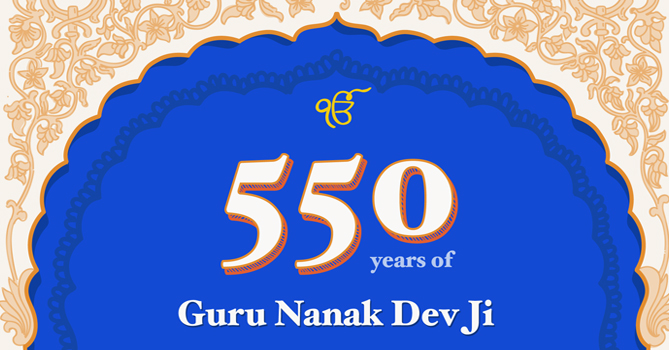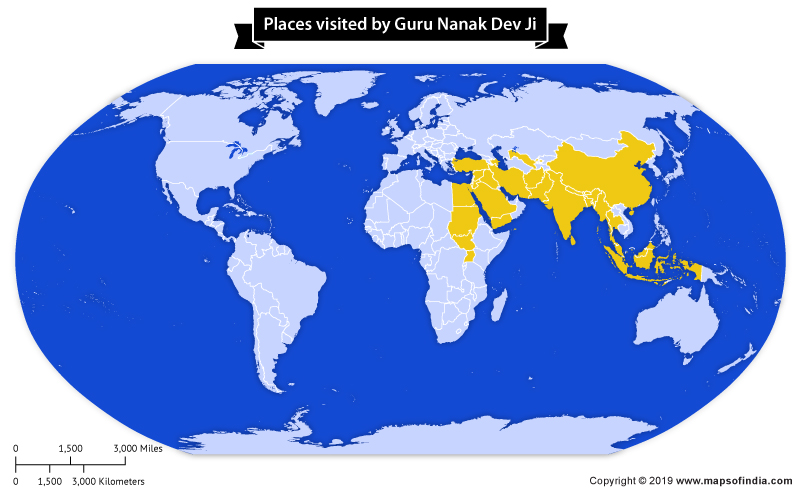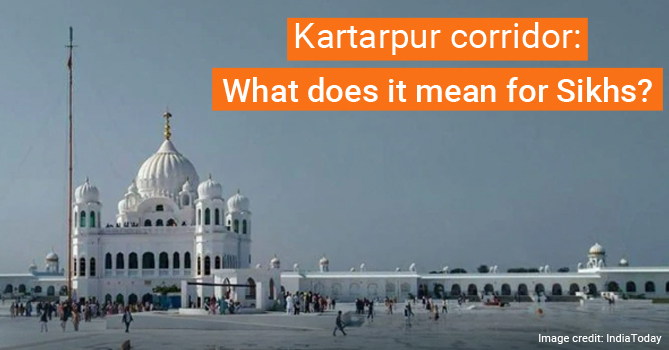

“There is no Hindu no Muslim, but only equality of man before One God” was the core message of Guru Nanak (1469 – 1539), the first Guru and founder of the Sikh faith.
The message found resonance with people at a time when followers of Islam and the Hindu religion in India remained deeply divided. Society remained polarized along communal lines then as it is now. In this backdrop, emerged a gentle voice of peace and universal brotherhood – a message recognizing every human as equal, irrespective of gender, religion, caste, or creed, and giving equal opportunity to all to live, work and earn with dignity.
Nanak Dev was born on 15 April 1469, in village Talwandi Rai Bhoe Ki, Nankana Sahib, Pakistan. Soft-spoken and mild natured, Nanak Dev grew up at a time when the Lodhi dynasty, under Bahlul Khan Lodhi, was still trying to find its feet and was always in conflict. It was a turbulent time with violence, loot, plunder, and forced conversions, a common phenomenon.
Adding to this was an existing social order stoking social tensions within and inter-community. Nanak Dev was disturbed by the inequality, injustice, and irrationality in the society around him, where men and women were born to serve pre-defined roles, where dignity and opportunity depended on a person’s birth, family, caste, and religion.
In both Hindu and Muslim communities, the gender divide remained wide, and this, too, disturbed young Nanak Dev. Daily life revolved around deeply entrenched rituals, traditions, superstitions, and taboos, all without rational explanation.
He questioned the presence of priests and Imams, who dominated religious thought and expression and tried to claim rights to stand between the faithful and the almighty, presenting himself as the only one with divine knowledge on how to connect with God.
Nanak Dev could not agree with the rigorous and extensive rituals, especially those laid down by Hindu priests, as the way to connect with God, the form and images of which were many. He did not accept the need for idol worship.
Nanak Dev, despite his young age, was quick to learn Hindi, Sanskrit, and Persian, besides his mother tongue, Punjabi. Few know, Nanak Dev attended an Islamic madrasa and exposed to the tenets of Islam. His close friend, and later his first disciple, Bhai Mardana was a Muslim and studied with him at the madrasa.
Always curious, he read several religious scriptures of Hindu and Islamic faith and was able to appreciate the finer points of both while rejecting the more regressive ones. He rejected the idea of rituals and believed a faithful must be free to directly connect with the Almighty, without the presence of priests or Imams.
He saw there was little communication, debate, or discussion to narrow the divide between the two dominant religions of the time – Hinduism and Islam, and prevailing tension between them disturbed him.
In Hindu societies, caste remained a significant cause for social divisions and exclusions. For Nanak Dev, social harmony was as crucial as communal harmony.
Nanak Dev was evolving into a free thinker and a rationalist – seeking a new path, away from existing ones. He traveled extensively to distant lands over 20 years, visiting different parts of India, including Assam in northeastern India.
His travels took him to Tibet, China, Sri Lanka, Mecca, Medina, Baghdad, among several other places, where he freely mixed with local communities. He studied their culture, religion, religious practices, and scriptures. All of these had an impact on his thinking and would help shape the Sikhi way of life he envisaged for his followers.

The message of a travelling mystic
Nanak Dev’s mother and his elder sister were the first ones to recognize the divine logic of what he expressed, most of which were in the form of Shabads or Hymns.
In Bhai Mardana, Nanak Dev found a friend, companion, and fellow musician. As Nanak sang his divine verses, Bhai Mardana added to his mysticism and appeal, playing the Rebab, a traditional musical instrument with origins in central Asia.
Soon, locals began frequently gathering to listen to Nanak’s Shabads, and his earthy logic of poetry and words found resonance and offered solace to common people. Adding to his mystique was his simplicity and humility, earning him love and respect from all.
In all his travels, Guru Nanak spoke of the equality between man and woman, where the ideal way of life involved love, peace, community service, sharing a part of one’s earning, and faith in a single formless Almighty.
In all lands he visited, the ordinary person understood the logic and simplicity of his message, irrespective of the culture they belonged or the religion they practiced.
Guru Nanak spoke of the Sikhi way of life which revolved around Three Core Pillars:
- Kirat Karni: Do honest work
- Vand Chakna: Share what you earn
- Naam Japo: Pray to HIS name
(For more on this, refer to our article: The Guru and His Teachings)
The message found universal appeal not just in India but faraway lands to the East, West, North, and South of India.
(For more on this, refer to the article: The Guru and his Travels)
Why did the Hindus and Muslims claim Guru Nanak as their own?
After widely travelling for 20 years, Guru Nanak and his family returned to his homeland Punjab and settled in Kartarpur, now part of Narowal district in present-day Pakistan.
At the time, Hindu and Muslim communities dominated undivided Punjab. Born a Hindu, Guru Nanak rejected both the Hindu and Muslim way of life. The appeal of Sikhism was growing, as was the message of the mystical bard who saw no distinction between man and woman, Hindu and Muslim, rich and poor.
His message was devoid of any bias, superstition, hatred, or exclusion, and this appealed to people of all communities. They warmly welcomed his presence and accepted him as one of their own.
Today, few remember that in 1947, when Punjab witnessed a violent and bitter partition, Nankana Sahib, where Guru Nanak was born and which remained part of Pakistan, was protected by local Muslim families from vandals. They protected and preserved the shrine till local Sikh families joined in.
Over the years, several Sikh families who stayed back in Pakistan post-partition migrated to Nankana Sahib and settled there. They continue to take care of the shrine with the support of the local Muslim community there.
Post-Guru Nanak’s passing away in Kartarpur in 1539, both Hindu and Muslim communities claimed Guru Nanak as their own and built mausoleums (side-by-side) by the River Ravi. Such was the love and respect for Guru Nanak. The mausoleums were subsequently washed away in floods.
In more recent times, famous Pakistani Sufi singer, the late Nusrat Fateh Ali Khan, composed/sang several hymns/songs in honour and recognition of the Guru. Kalam Baba Nanak remains among the more popular ones.
There are references to Guru Nanak found even today in different parts of the world, where he is known by different names.
Guru Nanak and his message of the Sikhi way of life continues to remain relevant and hold universal appeal.




